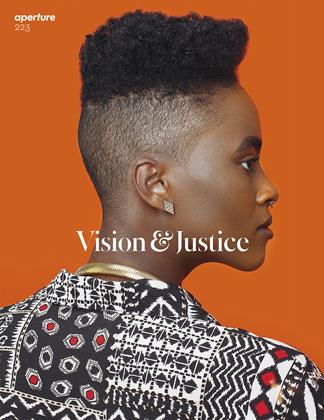Annie Leibovitz
PICTURES
Nell Painter
A photograph by Annie Leibovitz gives us celebrity from both sides of the camera. The photographer is an icon; the sitters, internationally recognized as subjects of consequence. This selection of Leibovitz images groups women, all of them black women, who function here as Very Important People as well as icons of American beauty. Leibovitz has captured the beauty and power within blackness that Frederick Douglass feared nonblack artists, blinded by prejudice, could never reveal. Her black beauty photographs, so often of women, would, however, have tested Douglass’s thoroughly malecentric imagination.
As a student in 1970, Leibovitz started out with photographs of John Lennon for Rolling Stone magazine, then moved on to the Rolling Stones, Demi Moore, Susan Sontag, a naked John Lennon embracing Yoko Ono, even Queen Elizabeth II. Though one of Leibovitz’s most famous images features Whoopi Goldberg in a milk-filled bathtub, most of the photographer’s subjects have not been black. Nonetheless, her images of black celebrities convey a nearly incomparable force, grace, and gravitas.
The women in these pages all appear rendered in the photographer’s hallmark bold color contrasts and arresting compositions. Leibovitz spreads Serena Williams across half the picture plane, arms flung open, legs astride, masses of straightened hair billowing before a cerulean blue ground. An alizarin crimson dress sculpts sturdy thighs, pleating over sensational buttocks, the very Amazonian physique that has been dissected, lauded, taunted, and now praised by Claudia Rankine in her 2015 New York Times Magazine article “The Meaning of Serena Williams” and in her prizewinning book of poetry Citizen: An American Lyric (2014). It is an image emblematic of what Annie Leibovitz’s photographs mean—powerful representations of black women, representations that shift views on issues of racial justice.
Susan Rice, in a beige dress, brown belt, and dark heels, poses somberly in the simple, warm-hued, Scandinaviandesigned United Nations Security Council chamber before a mural by the Norwegian artist Per Krohg. Surrounded by ruddy browns, Leibovitz’s Rice—at the time the United States Ambassador to the United Nations—embodies the subdued, stately headquarters of world peace, world peace, not simply American peace. Michelle Obama’s pose, with its emphasis on her neck, recalls John Singer Sargent’s Madame X and the palette of Vermeer. Obama’s portrait seems to quote Lorna Simpson’s photo-based work Untitled (melancholy dame/carmen jones) from 2001, also doubtless inspired by Vermeer. Lit strongly from the back, Leibovitz silhouettes Obama’s somber prognathic profile against the payne’s gray ground.
In Douglass’s era of the late nineteenth century, prognathism still conjured up negrophobic notions of anatomist Petrus Camper’s “facial angle.” Today, Camper is forgotten, and Obama’s profile speaks glamour.
Women in Black, Leibovitz’s 2000 subdued group portrait curated by the model Iman for Vanity Fair, proclaims the actual existence of sixteen fashion models of African descent. Here fashion-world beauty leaps out of a claim for justice in an industry notorious for colorism. Today we recognize the schema’s quotation of a previous Leibovitz fashion shoot of largely white models (skin color unnamed).
A composed, motionless Toni Morrison appears in a portrait by herself in black and gray, covered up and turned away from the viewer toward a sky full of cumulus clouds, weather vanes foretelling a fair and a stormy future. Leibovitz continues to photograph iconic black women. She recently pictured an unclothed and unstyled Lupita Nyong’o with natural hair, a departure from earlier glamour shots. The plainspoken face of a phenomenally beautiful, dark-skinned actor resonates with the historical beauty so eloquently evoked by Deborah Willis in her landmark study Posing Beauty: African American Images from the 1890s to the Present (2009). Leibovitz’s images of famous, black females take us into a celebrity verisimilitude that looks cleareyed into justice.
Nell Painter is Edwards Professor of American History, Emeritus at Princeton University and the author of The History of White People (2011).
 View Full Issue
View Full Issue
More From This Issue
-
 Pictures
PicturesJamel Shabazz
Summer 2016 By Khalil Gibran Muhammad -
 Pictures
PicturesLatoya Ruby Frazier
Summer 2016 By Teju Cole -
 Words
WordsBlack Lives, Silver Screen
Summer 2016 -
 Pictures
PicturesSally Mann
Summer 2016 By John Stauffer -
 Pictures
PicturesAwol Erizku
Summer 2016 By Steven Nelson -
 Pictures
PicturesDawoud Bey
Summer 2016 By Leigh Raiford











